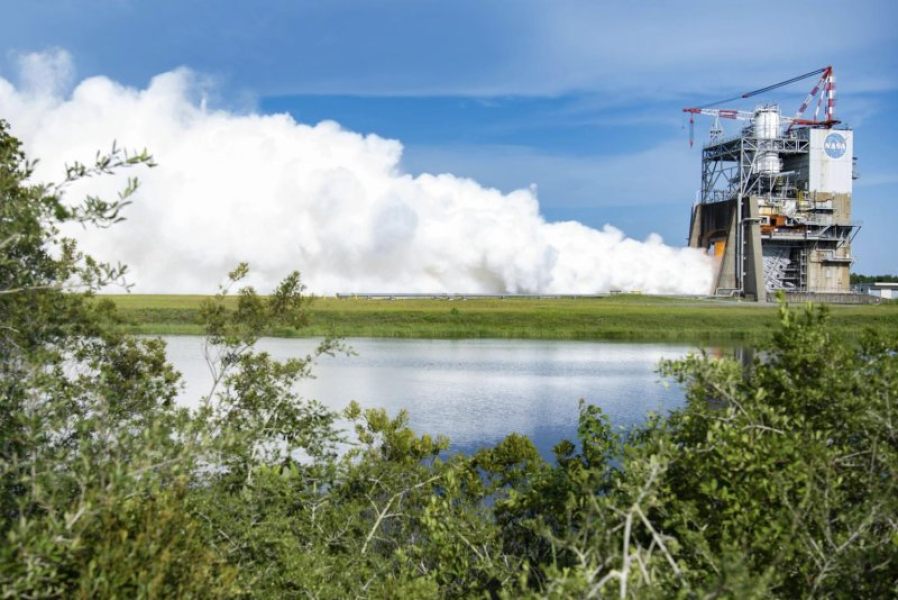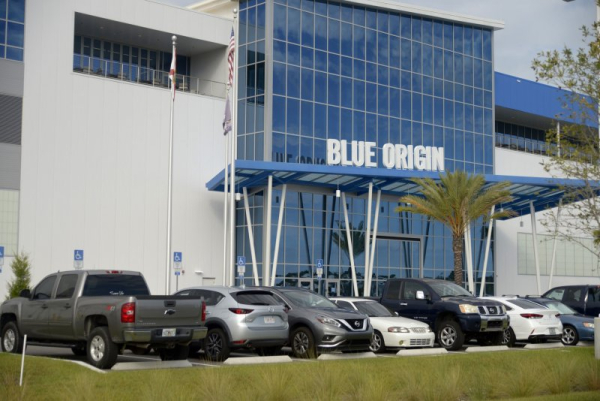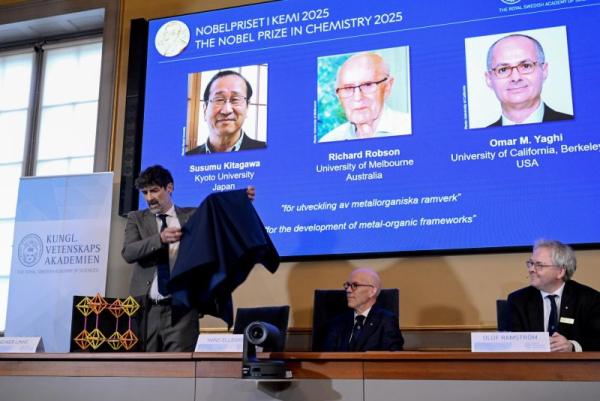
NASA on Monday announced the completion of full-scale testing of its new RS-25 engine, which will power the Space Launch System rocket for the Artemis missions to the moon.
NASA tested RS-25 engine No. 20001 on Friday at the Fred Haise Test Facility at NASA's Stennis Space Center in Bay St. Louis, Mississippi. The hot-fire test was the first since certification testing of the new RS-25 engines was completed last year.
The engine, built by contractor L3Harris Technologies (formerly Aerojet Rocketdyne), burned for nearly eight and a half minutes. That’s about the same amount of time it takes for four RS-25 engines to fire the SLS rocket that carries astronauts aboard Orion into orbit. The engine was also fired to 111 percent power to gauge its limits.
The test was conducted by a joint team of NASA, L3Harris, and Syncom Space Services, the contractor for the on-site facilities. All RS-25 engines will be tested and confirmed as flight-worthy at NASA Stennis following the completion of the RS-25 certification test series in April 2024.
“The new engines for future SLS rockets will maintain the high reliability and safety performance for which RS-25 is renowned, while enabling more affordable, high-performance engines for the next era of deep space exploration,” Johnny Heflin, SLS liquid propulsion manager, said last year.
The RS-25 engine was developed in the 1960s, with a previous version from Rocketdyne dating back to the 1970s. NASA's first space shuttle flight took place in April 1981, powered by RS-25 engines.
The SLS rocket for the Artemis missions will require four RS-25 engines, which together will provide 8.8 million pounds of thrust during liftoff.
NASA is planning the first crewed Artemis mission, Artemis II, for April 2026. It will be the first crewed mission beyond low Earth orbit since Apollo 17 in 1972. Artemis II will take four astronauts on a journey around the moon. Artemis III will include a lunar landing, scheduled for 2027.
Sourse: www.upi.com





